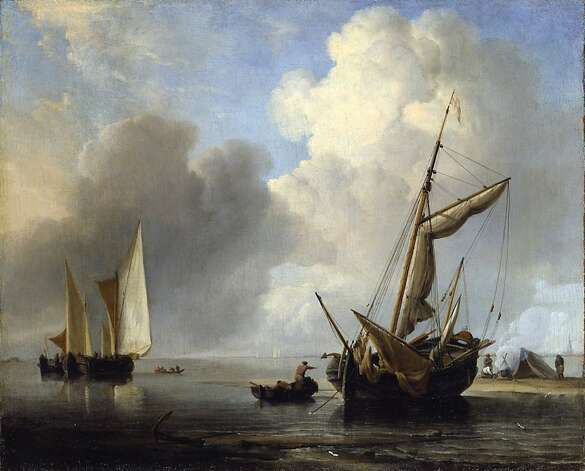
“Fishing Boats by the Shore in a Calm” (ca. 1660–65) Oil on canvas by Willem van de Velde the Younger (1633–1707)
This is one of my favorite paintings from Legion of Honor, for I always have this obsession with paintings of boats and ships. Willem van de Velde the Younger used many cues to give depth perception to this painting. One being occlusion, I can tell that the two boats on the far left seem to be parallel together, and the first boat is in front of the second boat because the first boat appears to be closer to where I am, and the second boat is further away from me. I also know that all the boats are about the same size based on my knowledge. This is the familiar size cue, even though some boats appear to be way smaller, some bigger, I still know that they are approximately the same size. So are the people in the painting, I know that they are about the same size as well, the two people near the tent are not x5 larger than those on the boat on the far back based on my knowledge. Another cue present in this painting would be aerial perspective, the fainter and the lighter color on the sky indicates that it is further away from me because the distance between me and the object of the background is further. And the bolder colors tell us that it the object is closer to me. Texture gradient tells me that the closer the objects are, the more details I can see. Therefore, I am able to see more details of the first boat that is closest to me than the ones that are further away from me.
Image source: http://www.sfgate.com/art/article/Dutch-and-Flemish-masterworks-at-Legion-of-Honor-2355389.php
